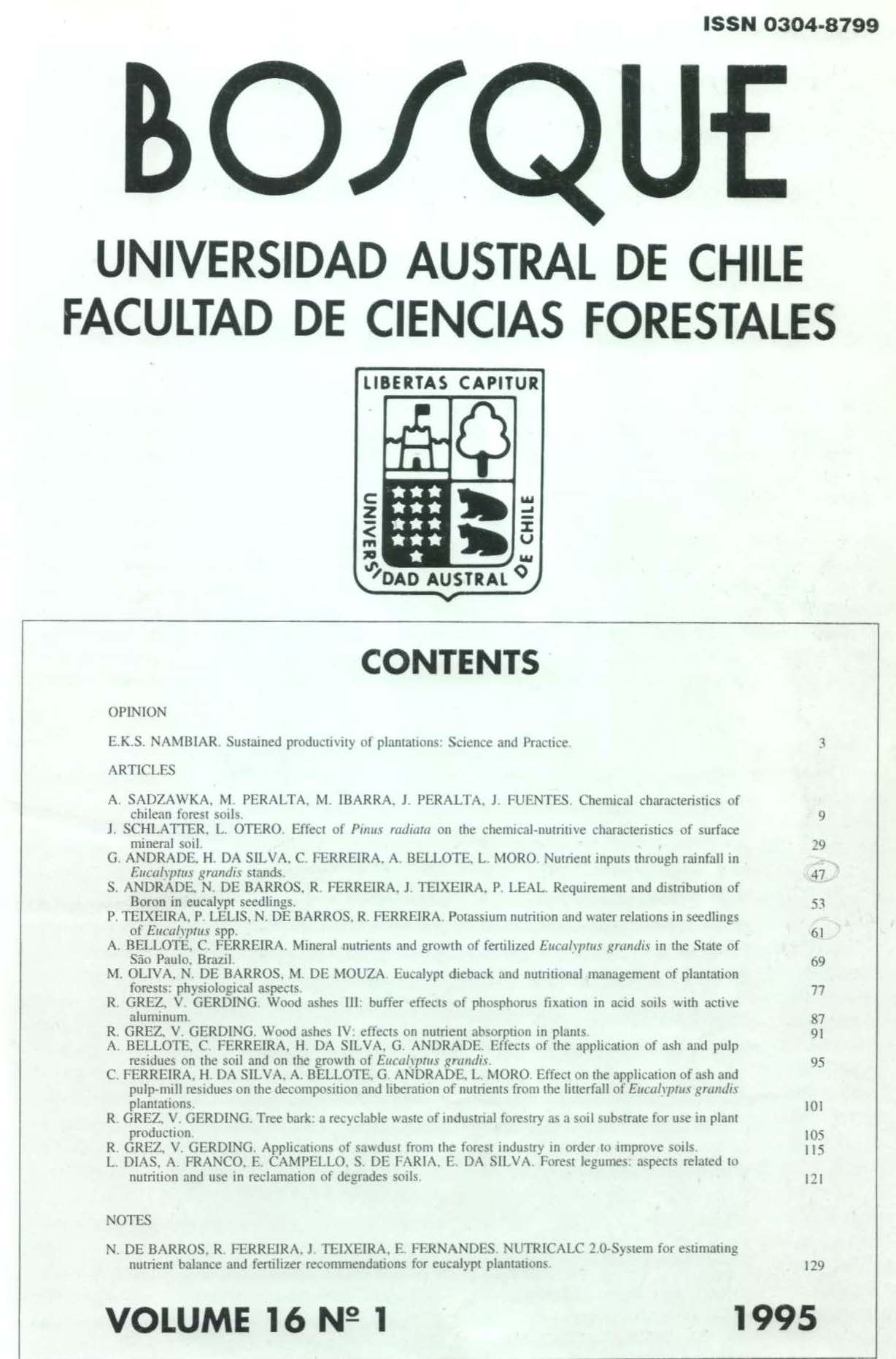Potassium nutrition and water relations in seedlings of Eucalyptus spp.
Main Article Content
Abstract
Water relations in eucalypt seedlings as affected by potassium levels and water stress were studied under controlled conditions. In a first trial, two levels of K (0 and 150 mg L -1) and two levels of soil moisture (field capacity and cyclic water stress) were tested on seedlings of eucalypt hybrids grown in plastic bags containing 9 L of a redyellow latossol. The hybrids reacted differently according to K and soil moisture level combinations.
In a second trial, the effect of K level of a nutrient solution on water relations of eight eucalypt species was investigated. It was observed that a greater K level (70 mg L-1) in the nutrient solution increased the efficiency of water use (EWU) of all eucalypt species, particularly of Eucalyptus camaldulensis and E. citriodora which when supplied with less K (7 mg L-1) showed lower EWU and a higher transpiration rate than E. tereticornis, E. grandis and E. pellita.
In a third trial, polyethylene glycol (PEG) was added to the nutrient solution in order to obtain three osmotic potentials (that corresponding to the original nutrient solution; -0.25 MPa; -0.50 MPa). The results allowed the placement the eucalypt species into three groups according to the stomatal resistance (r): 1) E. camaldulensis, E. tereticornis, and E. citriodora which showed the smallest r-values, ranging from 2.94 to 3.99 s*cm-1; 2) E. pellita, E. cloeziana, and E. grandis with intermediate r-values ranging from 5.65 to 11.09 s*cm-1 ; and 3) E. urophylla and E. saligna with r-values of 20.70 and 26.98 s*cm-1.

